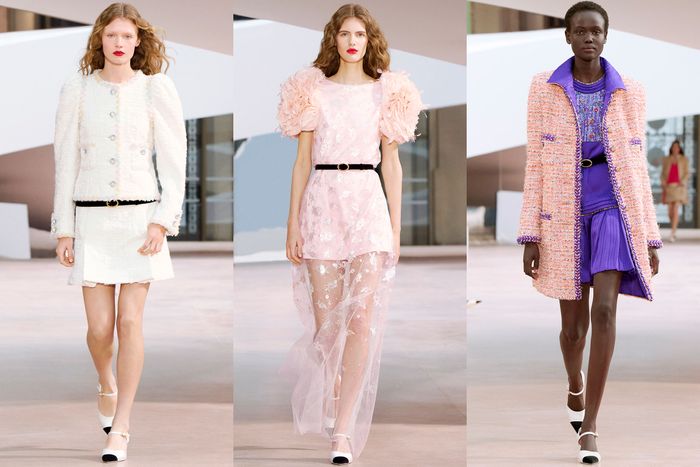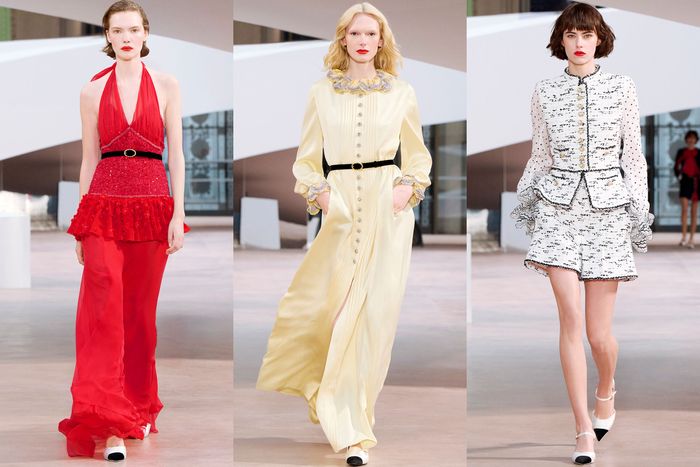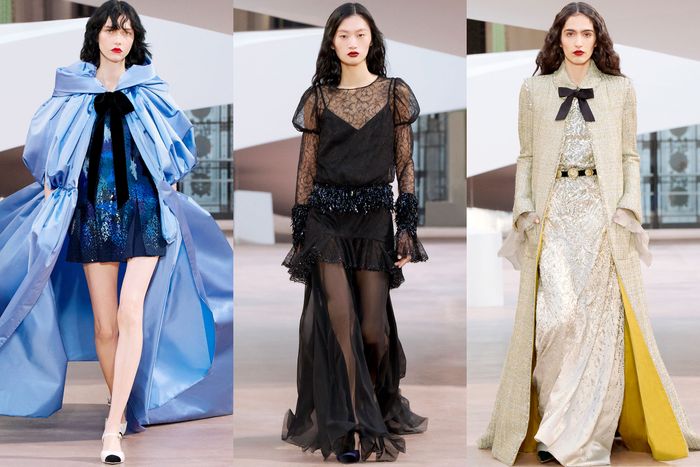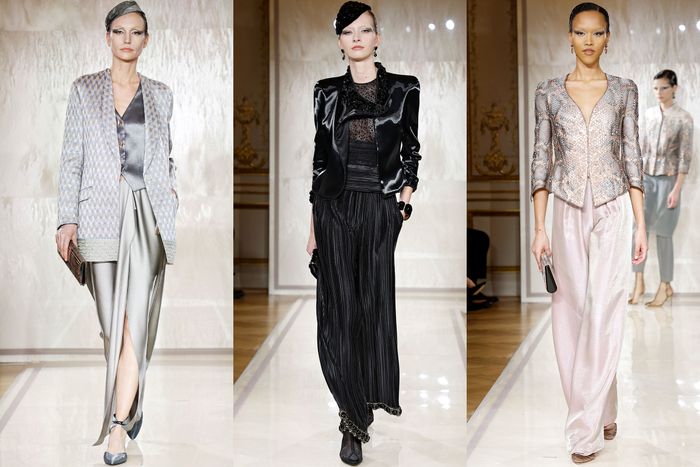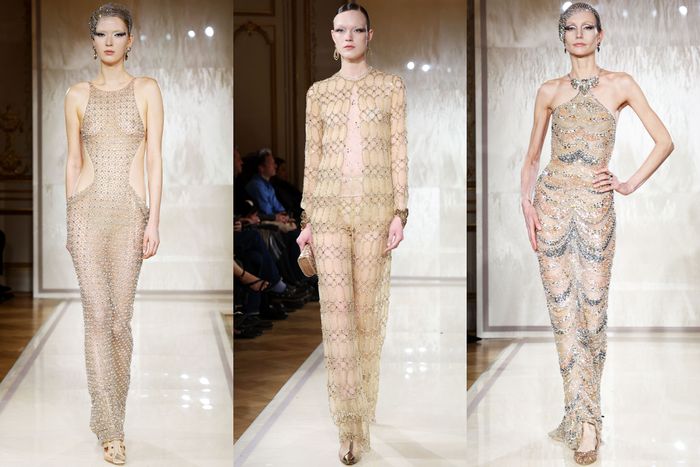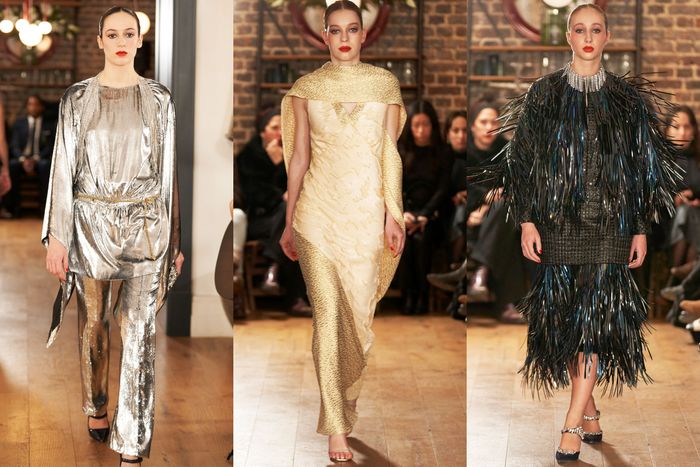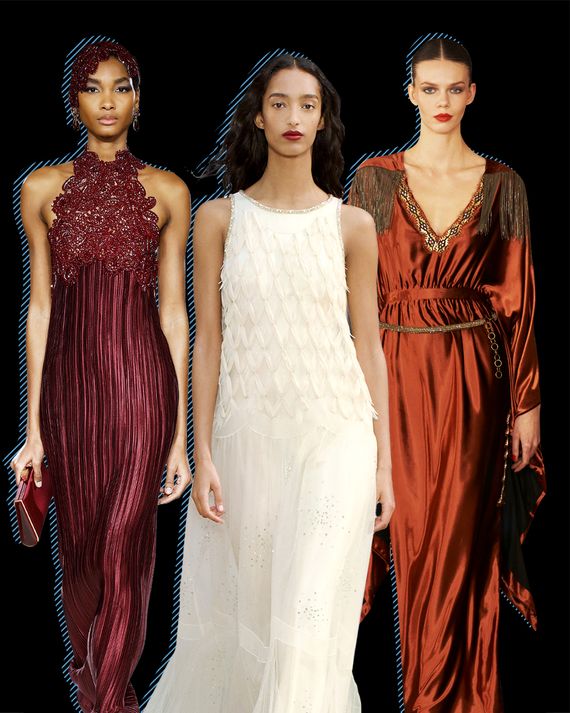
Fashion is in a fine limbo. Revenues are flat. There’s no hot news to report. Chanel is a reflection of the waiting game. The house doesn’t typically name its haute-couture collections, but if it did, a fitting title for Tuesday’s spring show would have been Beckett at the Mall. Held under the sky-filled dome of the Grand Palais, its set featured a looping series of white ramps that formed a pair of interlocking C’s — the Chanel logo. The design was the work of interior and set designer Willo Perron. It made me think of a galactic mall or an airport terminal. As for Beckett, the reference is obvious to fashion fans. We’re waiting for Matthieu Blazy.
Chanel’s new creative director arrives on Rue Cambon sometime this spring. Meanwhile, until his first collection later in the year, the studio team is handling things. The significance of Blazy’s appointment goes beyond a new look for Chanel, founded 110 years ago. It means finally the end of the Karl Lagerfeld era. He showed his first collection in 1983, and his successor, Virginie Viard, who left in 2024, really continued his ideas. The studio team is doing the same, with a few cheery spots. That’s more than four decades of the same vision for a house that helped to define the 20th-century woman. (Gabrielle Chanel claimed, not unreasonably, that she was the modern woman.) There are generations who not only have no idea what motivated Chanel — lightness, love, and liberty, for starters — but also, and more important, what the label could mean in the 21st century and how its shows and imagery could look. Blazy’s changes over the next couple of years are likely to be sweeping. And they should be.
One thing that Chanel needed badly during the Viard interlude was lightness — in construction as well as attitude. If you look at Coco Chanel’s early designs, in particular, they are incredibly light. Her suits look blown on the body. Partly that was a reflection of the time (the 1920s and ’30s) and the fact that the clothes were all made by hand. (Ready-to-wear happened much later.)
So it was a pleasure to see the studio team strip away some of the effects and inject some lightness into the clothes, evident in the opening suits, which featured a pleated miniskirt and pared-down jacket. Everything was shown with a black-tipped, stacked-heel shoe in peau de soie, and red lips as the main accessory.
The collection was loaded with unexpected colors, like citron, emerald, cherry red, and periwinkle, and the house seemed to be making the case that the vivid palette — used as a lining for speckled tweed suits, as the upper portion of a dress in a two-piece outfit, for some evening styles — can also be found in the Chanel archive. No doubt, but the jumpy brights weren’t handled so imaginatively. Their effect came across as Look what we’ve found in the cupboard. The best use was in vibrant cherry for a long, flowing evening dress, perhaps organza, in a classic Chanel style.
Also in the clunky category were suit jackets with slight leg-of-mutton sleeves with armholes set high on the shoulder, causing a weird pinched look in the back. But the show had plenty of charm and breeziness, especially a short A-line dress beaded in midnight blue with a matching cape edged in a wavy band of gold, and a group of tweed suits with sleeveless jackets and lovely blouses.
It’s been 20 years since Giorgio Armani, king of the relaxed pantsuit, launched his Privé collection for couture clients. And last night, in his relatively new quarters just off Avenue Montaigne, where the black cars were thick outside the restaurant L’Avenue, he presented 93 looks, then, on the arm of a model, the designer, who is 90, made the trek from room to room, smiling and waving at his guests.
He is rather like a missile cruiser, ignoring heavy weather. He just sails on, opening once again with a neat, weightless jacket and either a long skirt or soft trousers. He called his collection Lumierès — appropriate for the reflective materials and embellishment. I think I’ve written this before but when Armani does a black evening pantsuit, almost no one does it better. It’s utterly convincing in its all-party-occasion rightness.
The middle of the show kind of sagged in interest, partly because he showed too many beaded, body-clinging columns and partly because some of the clattering, heavy gowns were borne by twig-thin women. Always a bad combination. But then, out of nowhere, an incredible gown in naked, beige-tone mesh appeared, with tiny beads and deep cutouts at the sides. Look No. 77 left behind much of the history-based designs we’ve seen at the spring couture shows.
As usual, Julie de Libran showed her small collection in her Left Bank apartment, among Parisian friends and guests. She’s been doing her own made-to-order line for about half a dozen years after working with Gianni Versace, Prada, then with Marc Jacobs at Louis Vuitton, among others.
Libran’s designs and fabrics look and feel small-batch and singular. She’s been working with some of the same mills and embroiderers for three decades, including a Swiss firm that embroidered long, thin, black plastic quills onto an evening cover-up. The effect is hard to put your finger on. Animalistic? Soldierly? Libran said she began this season looking at armor, the plain underpinnings men wore under armor, and medieval clothes generally.
But Libran is a time traveler, so there was a whiff of the 1960s in the collection, too. Among her best looks were a deep rusty-red gown with a V-neck and medieval sleeves, and a fringe of tiny chains embroidered across the back and partially down the sleeves; a tunic and matching trousers in silvery panne velvet; and evening separates in cream-colored sequins that, through some magic, looked slightly worn in places, like plush fabrics with a memory.
Olivier Saillard, a costume curator and a former museum director, who has staged some well-known performance pieces with Tilda Swinton, held his Moda Povera VII on Tuesday. Moda Povera isn’t exactly a label but, rather, an occasional performance involving old clothes that Saillard and his small team (formerly with couture houses) have reimagined. He’s simply a genius, and one of my favorite people to talk to.
This time the performance involved old wedding dresses, all found on sites like eBay. They were recut — and in most cases, reduced to a minimalist satin or tulle tunic or a draped top — then placed into roughly 25 muslin bags arranged in two rows in front of the audience. A model, wearing dark trousers and a tank top, put on a look as Saillard helped her, and a French actress read a short poem. The model then changed into the next look. One look was simply a bouquet of white paper flowers that spelled out the word “FLEURS.”
The performance was clever, with surprising and subtle echoes of a marriage, and also of some of the ’90s designers that Saillard loves, like Martin Margiela, Helmut Lang, and Ann Demeulemeester.
I asked Saillard what he thinks of the current interest among designers in historical fashion. It’s hardly a new development — Margiela looked at past shapes and construction. But has something changed?
Saillard said, “At the moment, fashion is very colorful. There’s lots of detail and a lot of embroidery. And it’s not very modern. It’s not fluid, not easy. It’s too many ideas. You know, the designers have too much information without any idea of what they could say.” He paused. “We really miss Helmut Lang. Also, I see a lot of young people focused on luxury, which is not fashion, exactly.
“So we are waiting for someone like Margiela who could say, ‘Stop. No. We are going to do things differently.” For now, we are still very much in the system.”



